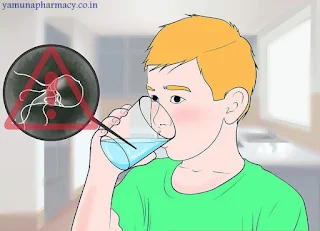When I see this old textbook image which shows the death
pumping water, this is a perfect image to perceptual importance of the safe
water. This image is a historical painting from the year 1854 during which
there was a cholera outbreak in London. This painting was produced after the British
Scientist George Snow, who proved it was contaminated bore-well water which was
spreading cholera.
With medical advances and measures of WHO this image may
seem irrelevant for his era, but records don’t support. In 2017 cholera
outbreaks are noticed in Gujrat, Koppal
of Karnataka, Nasik of Maharastra, Kadua and
Ganjam of Odisha and Ludhiana of Punjab.
With a heavily populated country like India outbreaks from
water-borne diseases are still prevailing high.
Disease outbreaks show countrymen are still devoid of safe
drinking water.
Water-Borne diseases
Water is an essential factor for life, Natural water sources
are rich in organic carbon, Nitrogen and proteins and other nutrients. These
nutrients attract microorganisms to grow in water. Pond water consists of at-least
multiplies 10000000 of bacteria.
There are many bacteria and other microbes that grow in
water are pathogens which cause diseases. These diseases are called as water-borne diseases.
Here is a list of water-borne diseases and their causative
agents
1. Dysentry- is caused by bacteria called Shigella or Proozoan called as Entamoeba histolytica. Vomiting, bloody
diarrhoea, fever are the symptoms of this disease. If the causative agent is
bacteria it is Bacillary dysentery and amoebic dysentery is the name for
dysentery caused by Entamoeba histolytica
.
2. Typhoid-is caused
by Salmonella typhii and Salmonella paratyphii bacteria’s .
Symptoms include weakness, muscle spasms, high fever, headache.
3. Polio- is caused by Poliovirus. This disease eradicated completed from India and
Thanks to Sabin and Salk polio vaccines.
4.Jaundice - is caused by Hepatitis-A virus. It causes inflammation in Liver causing
bilirubin content to increase. Symptoms include yellow coloration of eye, nails
and urine darkening. Jaundice may damage brain if left un-treated.
5. Cholera is caused by Vibrio
cholerae bacteria. Symptoms include dehydration, electrolyte imbalance, Diarrohea,
muscle cramps, sunken eyes and skin colouration turns blue in severe cases.
7. Giardiasis-is a protozoan disease caused by Giardia lamblia protozoa. It causes Diarrohea and enteritis
(inflammation in the gastrointestinal tract).
8. Crytospridiosis- Causative agent is a protozoan called as Cryptosporidium parvum. Severe diarrheal
symptoms and dangerous if the immunity is weak. This organism can evade
chlorination and ozonization.
9. Campylobacteriosis-is caused by Campylobacter jejuni
bacteria. It causes severe dysentery like symptoms with a high fever. It spread
from bacteria-contaminated with faeces.
10. Legionellosis- Legionella
bacteria is the causative agent and symptoms include cold, chills fever without
Pneumonia.
Lesser-Known disease
SARS- Though it is well known that this dangerous disease is
spread by air and person to person contact. There are several cases registered
which are probably spread by water. SARS is caused by the SARS Corona Virus.
Symptoms are flu-like with, fever, muscle pain, fatigue, sore throat, and
cough.
Gastric Ulcers-are caused by bacteria known as Helicobacter
pylori. It is mainly spread by food and water. It leads to stomach cancers if
untreated. Symptoms are abdominal pain, feeling of the tight abdomen due to
inflammation, excess saliva production in mouth, nausea, vomiting, loss of
appetite and weight, bleeding while vomiting.
What Can You Do To
Save You from waterborne disease
Purification of water
This process is also known as water treatment. It involves
various steps including microfiltration, ozonization, UVB treatment and
reverse osmosis. Various microfilters used to eliminate bacteria’s, protozoans
and Fungi as they are trapped under the filters.
Purified water eliminates the spread of all the diseases
listed above and makes the water safe for drinking and being healthy.
- Proper treatment of domestic municipal water to avoid outbreaks
- Keep the water containers clean to avoid dust and any other particle enter Water
- Use water boiled for at least 5 minutes
- Keep your home, premises clean
- Avoid chances of any faecal contamination
- Avoid drinking untreated water in public places, especially hospitals and parks
- Avoid swimming in muddy water
- Avoid food cooked in water with possible contamination
- Drink properly treated bottled water as much as possible
.












Comments
Post a Comment